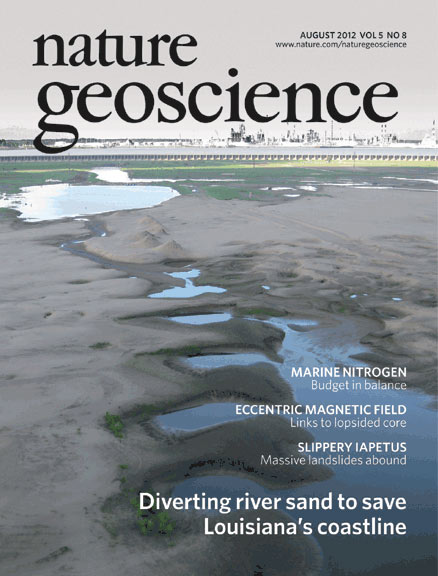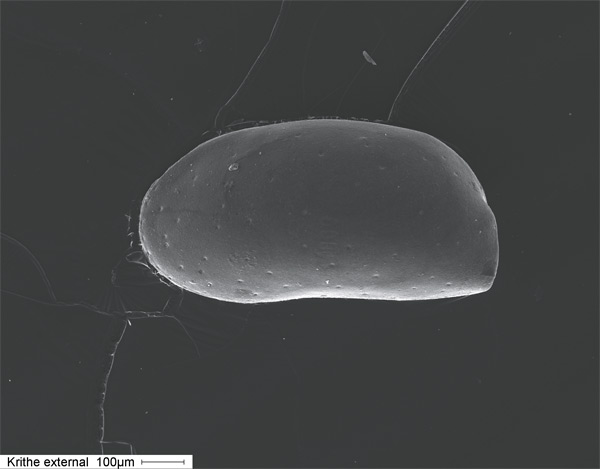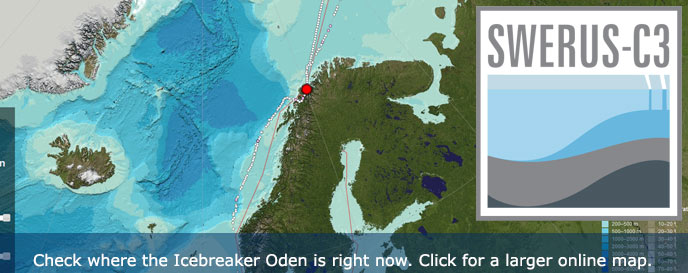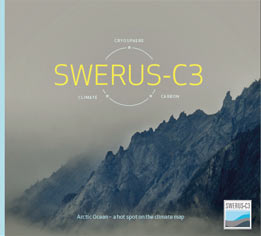 An international team of scientists, including Martin Jakobsson from the Department of Geological Sciences and Johan Nilsson from the Meteorological Department at Stockholm University, has published a new study in Nature Geoscience entitled "Deep Arctic Ocean warming during the last glacial cycle”. The researchers have reconstructed the temperature history of the intermediate and deep Arctic Ocean during the past 50,000 years, using novel geochemical techniques on microfossils in sediment cores from across the central Arctic Ocean. Remarkably, the results show that in the last ice age, from about 50,000 to 11,000 years ago, the central Arctic Basin between 1,000 and 2,500 m water depth was occupied by water that was generally 1–2 °C warmer than in the modern Arctic. This extraordinary finding, indicating that the glacial Arctic Ocean operated in a different dynamical regime, challenges the view of a general glacial cooling of the ocean.
An international team of scientists, including Martin Jakobsson from the Department of Geological Sciences and Johan Nilsson from the Meteorological Department at Stockholm University, has published a new study in Nature Geoscience entitled "Deep Arctic Ocean warming during the last glacial cycle”. The researchers have reconstructed the temperature history of the intermediate and deep Arctic Ocean during the past 50,000 years, using novel geochemical techniques on microfossils in sediment cores from across the central Arctic Ocean. Remarkably, the results show that in the last ice age, from about 50,000 to 11,000 years ago, the central Arctic Basin between 1,000 and 2,500 m water depth was occupied by water that was generally 1–2 °C warmer than in the modern Arctic. This extraordinary finding, indicating that the glacial Arctic Ocean operated in a different dynamical regime, challenges the view of a general glacial cooling of the ocean.
The Arctic region has received considerable attention due to its sensitivity to the changing climate. Of particular concern is the rapid decline of the summer sea ice extent, which this year even may approach another record low since satellite observations begun 1979. The sea ice in the Arctic forms at the top of the ‘halocline’, a 200–300 m thick layer of low salinity seawater capping the Arctic Ocean. The low salinity of the halocline layer is reflects the high freshwater to the Arctic Ocean. The halocline is also very cold, close to freezing point of seawater near -2°C, protecting the sea ice from the deeper laying warmer and more saline Atlantic Water Layer that flows into the Arctic Ocean from the North Atlantic.
The new study published as a Letter in Nature Geoscience shows that the warm intermediate Atlantic Layer was displaced far downward in the glacial Arctic Ocean, resulting in a substantial warming at depths between 1000 and 2500 m. Based on a conceptual oceanographic model, the researchers propose a mechanism for the subsurface warming of the glacial Arctic Ocean: A reduced influx of freshwater to the Arctic Ocean acted to deepen the halocline and push the warm Atlantic Layer downward. Based on their results, the researchers conclude that the Arctic Ocean has a previously unrecognized high sensitivity to changes of the freshwater input over multiple timescales, which is manifested in large temperature excursions of the intermediate water layers.
The Swedish contribution to this study is a part of the Swedish-Russian-US Arctic Ocean Investigation of Climate-Cryosphere-Carbon Interactions, the SWERUS-C3 Program supported by the Knut and Alice Wallenberg Foundation.
Further reading: http://www.nature.com/ngeo/journal/vaop/ncurrent/full/ngeo1557.html
Reference to the Letter in Geoscience:
Cronin, T. M., Dwyer, G. S., Farmer, J., Bauch, H. A., Spielhagen, R. F., Jakobsson, M., Nilsson, J., Briggs, W. M., and Stepanova, A., 2012, Deep Arctic Ocean warming during the last glacial cycle: Nature Geoscience, v. advance online publication. Doi: 10.1038/ngeo1557
Image of the ostracode Krithe glacialis. Microfossil shells of this ostracode have been analyzed in the study for the Mg/Ca ratio that provides an estimate of paleo-bottom temperatures. Image: Tom Cronin, USGS.








